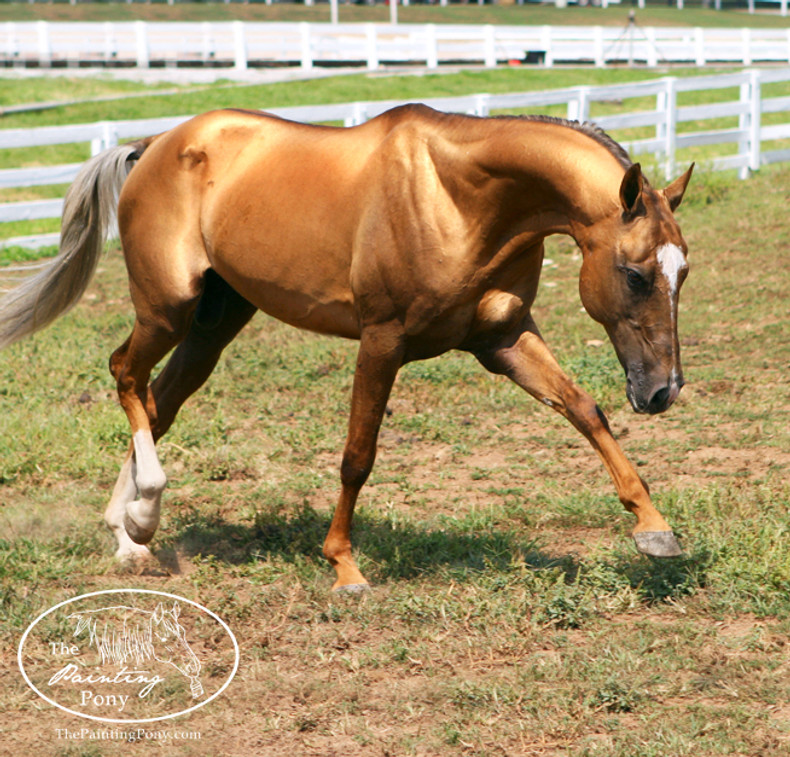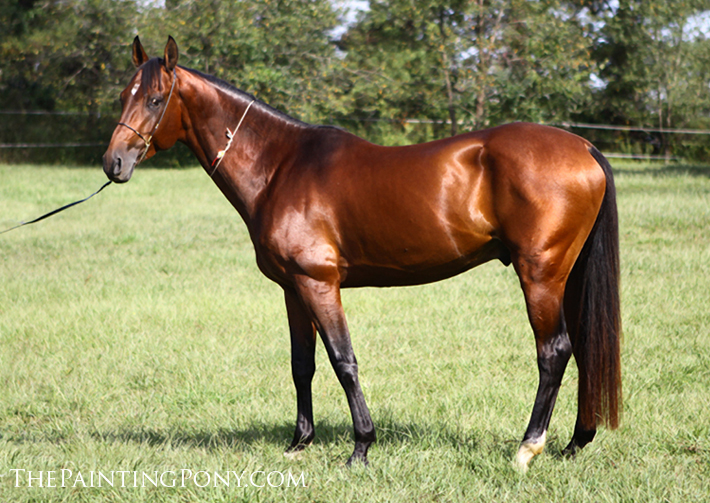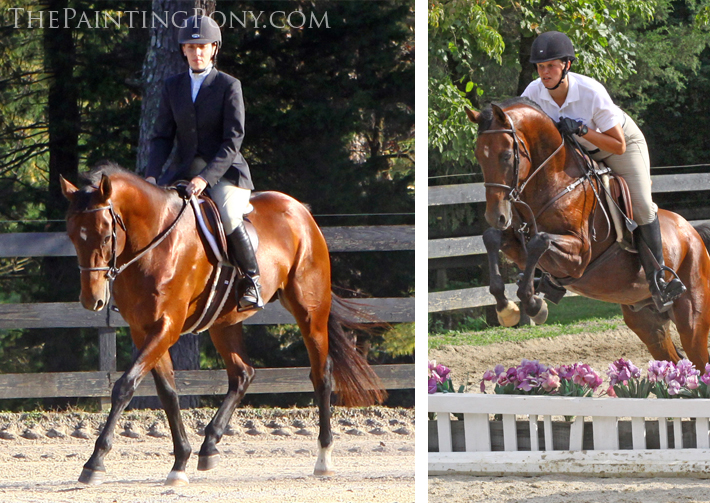May 20th - 26th is International Heritage Breeds Week, hosted by The Livestock Conservancy. The purpose of this week is aimed to raise global awareness about endangered heritage breeds of livestock and poultry. Many of our traditional livestock breeds have been replaced with more "improved" breeds in modern animal agriculture in order to keep up with the demands of modern society. Unfortunately, this is at the expense of a massive loss in genetic diversity in heritage breeds who carry vital genetic information that is highly valuable to preserve for the future. Worldwide, it is estimated that about one domesticated livestock breed every month is lost to extinction forever.
To celebrate International Heritage Breeds Week and raise awareness for one of our own personal favorite horse breeds, The Painting Pony is highlighting on our blog this month the beautiful and legendary Akhal-teke horse. Our small farm is an active participant in the promoting and preserving this wonderful breed of horse with our Stallion, Gardiyan through breeding a select number of foals and by attending local competitions and events. It is our desire to share how truly amazing this breed is, and that it is worth saving for future generations.
Breed History
The Akhal-Teke horse is an ancient, 3,000 year old breed originating from
Turmenistan that is said to be the last pure strain of the original
turkmene horse. The word Akhal-Teke emerged from the KaraKum desert
from the “Teke” tribe that lived near the “Akhal” oasis. Recent DNA
research from the University of Kentucky suggests that they are the
oldest domesticated light breed of horse in the world (predating even the Arabian horse). Slender, long
legged equine remains have been found near the Caspian Sea that date
back as far as 5,000 years. Throughout history, the Akhal-Teke
ancestors have been known by many different names such as the Nisean,
Turkoman, Turk, and Parthian.
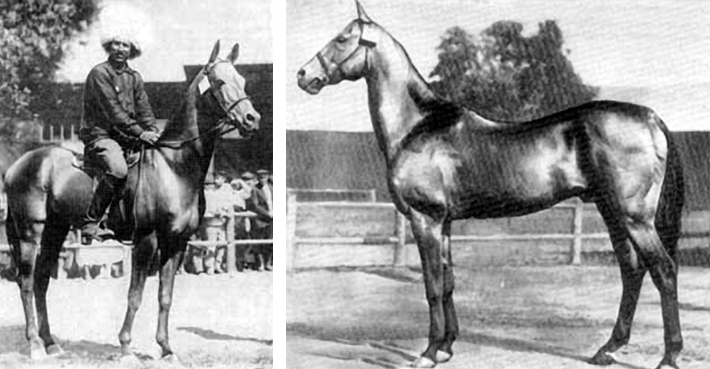
Three thousand years of use as raiding and war horses created excellent endurance and stamina as well as cat-like reflexes. Their movements are long and lateral, conserving energy on long treks. These Akhal-Teke horses developed a reputation for being the very best horses you could ever have and quests and wars were fought over them and they were treasured as family members and slept in the tents of their owners, alongside their people.
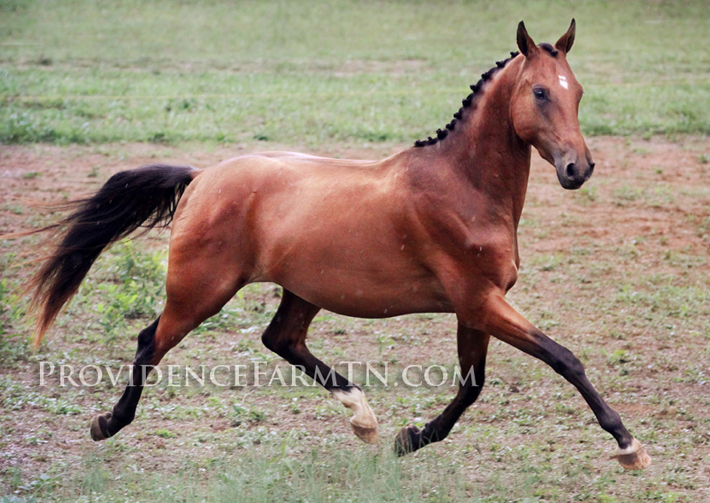
Traditionally the tribesmen adorned their horses with ropes around their necks called alajas/aladjas. An aladja is used traditionally to ward against evil spirits and keep the horse safe. Additionally, metal collars made from silver and semi-precious stones were also fashioned and worn by their horses. A successful raider's horse would be seen to be wearing intricate bridles and collars all made from silver and gemstones as the horse's share of the "loot."

When the Soviet Union invaded and took over the region, the horses were all but wiped from existence when times got hard and the Soviets ordered the horses slaughtered in order to feed the people during famine. The Turkmenes refused to kill and eat their horses and, instead, set them loose in the desert. Because Akhal-Teke pedigrees were traidtionally orally kept, this meant that generations of ancestry was lost. As a result of this, the Akhal-Teke was robbed of modern day prominence as their numbers dwindled down to critically low numbers. Gradually the value of the breed was realized and they were saved and bred as race horses, though their numbers remain critically low. Many Akhal-Teke races are still held in Turkmenistan and Russia today.
There are an estimated 5,000 worldwide and about 500 purebreds in North America. Despite relatively low population numbers in comparison to other sport horse breeds, several Akhal-Teke’s have been successful in the upper levels of the equestrian world and have competed at Grand Prix level dressage, the Advanced division in Eventing and in the Tevis in endurance.
In 1979, the first Akhal-Tekes set foot on American soil when Phil and Margo Case imported the stallion, Senetir. Many of Senetir's offspring successfully competed in upper level Eventing and Dressage. Sengar and Kandar are two of such offspring worth noting as being short-listed for Olympic games during their three-day eventing careers.
Watch the below video to see footage of the akhal-teke Kandar in action!

Breed Characteristics
Akhal-Tekes (commonly referred to as the greyhounds of the equine world) are physically characterized as long, slender
horses, with hooded eyes and long sleek ears. Their elegant necks are
set high on the chest and they should be level across the topline. They
are narrow chested but deep in the girth and are generally longer than
they are tall. Average height for a Teke is between 15-16 hands tall
though some are taller. They are a hot blood like their Arabian cousin
but generally tend to be mellower in temperament. Teke’s are notorious
for the deep bond which they form with their owners. Wonderful trail
horses due to their smooth flowing gaits, the Akhal-Teke adapts well to
which ever discipline is chosen for them.
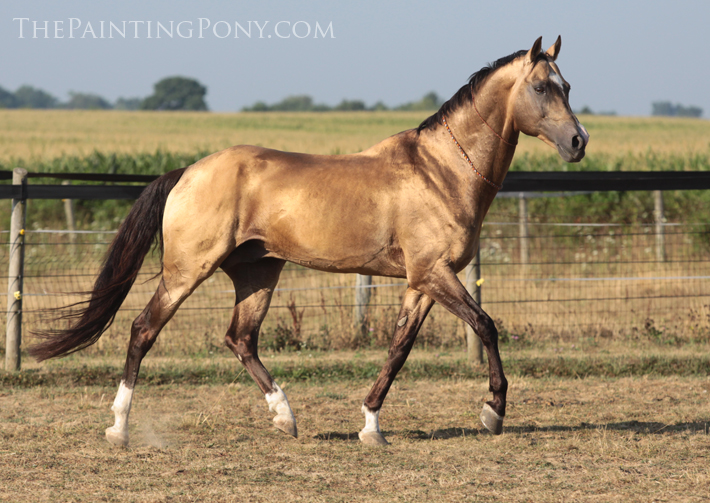
One of the most notable characteristics of the Akhal-Teke is their metallic coat color that attracts attention where ever they go. It is a result of a longer portion of the hair follicle being translucent, more similar to human hair than other horses. Palominos and buckskins seem to be actually made of molten gold as a result of this hair. All colors of Akhal-Tekes carry this trait to their coat but some seem to have more of a "shine" factor than others and it is not known how this is genetically passed on to offspring.

Breed Temperment
The Akhal-teke is considered a hot-blood but typically more laid back than an arabian or thoroughbred. They have good work-ethics and love having a job to do working with their owners. Akhal-Tekes typically thrive on human companionship and
form deep bonds with their people. They are also highly intelligent and
sensitive and do not do well with rough handling. They are not only sensitive to a rider's aides, but also can become offended easily if a handler is too harsh. When a punishment for
misbehavior does not seem "fair" they will often become insulted by it
and act defensively as a result. If this is misunderstood as simply "bad behavior" it results in the situation escalating more as things spiral downward as the horse continues to act in self defense. A horse in the wrong hands that has
been deemed "dangerous" will often become calm and friendly simply by
the changing of handlers to someone who is better suited to their
sensitivity and intelligence. For this reason, Tekes are not a horse for
just anyone and do best with someone who is able to handle a sensitive
horse who desires a strong relationship with their person. When deciding on whether to get an akhal-teke of your own, it is important to take this into consideration.
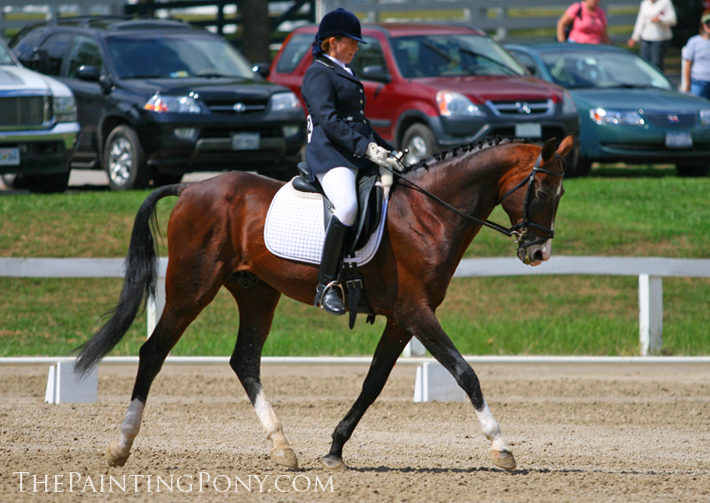
Why is the Akhal-teke worth saving? Many of today's modern, sportive breeds owe a share of gratitude to the Akhal-teke for its contribution to their creation. Breeds such as the great Thoroughbred, trakehner, and don horse been the result of heavy akhal-teke influences. If the akhal-teke has been such an influencial breed to the horse world throughout history, it only makes sense that these valuable genetics (that can not be found anywhere else) should be preserved for the future.
If you would like to learn more about the Akhal-teke, you can visit the following resources:
Akhal-teke Association of America
Akhal-tekes in Sport Facebook Page
Akhal-Tekes For Sale, Breeding, Lease and Rehoming Facebook Page
You can also help support the efforts of the Akhal-teke Assiciation of America to preserve and promote this unique breed of horse by shopping at The Painting Pony. A portion of each sale of specially designed ATAA logo wear is sent to the ATAA. Be sure to enter ATAA at checkout and a percentage of any purchase will also be sent to the ATAA.
Shop the ATAA logo wear here.

